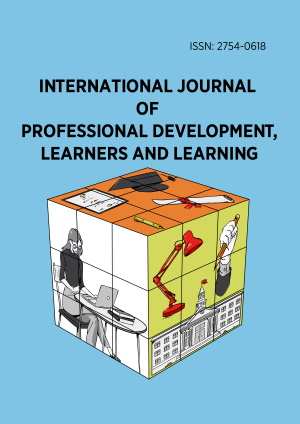Review Article
Philippine Basic Education Learning Continuity Plan: Creating Space for Indigenous Peoples toward Inclusive post-COVID-19 Education
More Detail
1 Mindanao State University, General Santos City, PHILIPPINES* Corresponding Author
International Journal of Pedagogical Development and Lifelong Learning, 2(1), January 2021, ep2102, https://doi.org/10.30935/ijpdll/9294
Submitted: 02 August 2020, Published: 29 November 2020
OPEN ACCESS 7203 Views 7138 Downloads
ABSTRACT
The continuity of education after the current crisis is a major national concern. A vulnerable group that may be further marginalized in the process consists of learners in indigenous communities. Through a review of the Philippine Basic Education Learning Continuity Plan (BE-LCP), this article seeks to create space for the indigenous peoples (IP) learners toward an inclusive post-coronavirus disease 2019 (COVID-19) education. Considering the pre-COVID-19 background of resources and the current epidemiological status of IP communities, the researcher presents strategies on how post-COVID-19 education can be delivered. For example, in an IP community with electricity access and low technology access but no internet and has high to moderate risk of virus infection, a combination of print modular learning and television- and radio- based learning can be adopted but not the synchronous and asynchronous learning and stagger in-person learning. This suggested option and others are offered in the paper.
CITATION (APA)
Cahapay, M. B. (2021). Philippine Basic Education Learning Continuity Plan: Creating Space for Indigenous Peoples toward Inclusive post-COVID-19 Education. International Journal of Pedagogical Development and Lifelong Learning, 2(1), ep2102. https://doi.org/10.30935/ijpdll/9294
REFERENCES
- Abad, M. (2020, July 02). Printed materials, online classes ‘most preferred’ for distance learning – DepEd. Rappler. Retrieved from https://rappler.com/nation/
- Arcilla, J. (2020, April 21). DepEd eyes TV, radio lessons. The Manila Times. Retrieved from https://www.manilatimes.net/2020/04/21/news/national/
- Chavez, L. (2020, April 03). For Philippines’ displaced indigenous students, COVID-19 is one of many threats. Mongabay. Retrieved from https://news.mongabay.com/
- De Vera, D. E. (2007). Indigenous Peoples in the Philippines: A country case study. Presented at the RNIP Regional Assembly Hanoi, Vietnam. Retrieved from http://www.iapad.org/wp-content/uploads/
- Department of Education (2020). DepEd Basic Education Learning Continuity Plan in the time of COVID-19. Retrieved from https://www.teacherph.com/
- Foundation for the Philippine Environment (2013). Where are Indigenous Peoples Distributed in the Philippines? Retrieved from https://fpe.ph/indigenous-communities.html/view/
- Hernando-Malipot, M. (2020, July 03). DepEd: Most students prefer ‘modular’ learning over online. Manila Bulletin. Retrieved from https://mb.com.ph/
- Kingsley, P. (2020, April 17). In Denmark, the rarest of sights: Classrooms full of students. New York Times. https://www.nytimes.com/2020/04/17/world/europe/
- Lawless, C. (2020, April 23). Synchronous vs asynchronous learning: Which is right for your learners? LearnUpon. Retrieved from https://www.learnupon.com/blog/
- Melnick, H., Darling-Hammond, L., Leung, M., Yun, C., Schachner, A., Plasencia, S., & Ondrasek, N. (2020, May 15). Reopening schools in the context of COVID-19: Health and safety guidelines from other countries. Learning Policy Institute. Retrieved from https://learningpolicyinstitute.org/product/
- Microsoft Philippines Communications Team (2018). Empowering the indigenous learners in the Philippines through education. Retrieved from https://news.microsoft.com/en-ph/
- Omar (2020, April 21). Afghan students move to remote classes to fill gap caused by coronavirus. Salaam Times. Retrieved from https://afghanistan.asia-news.com/
- Peralta, J. (2017, August 27). Over 2.3 million households remain without electricity – NEA. CNN Philippines. Retrieved from https://www.cnn.ph/news/
- Roberts, T., & Hernandez, K. (2019). Digital access is not binary: The 5'A's of technology access in the Philippines. The Electronic Journal of Information Systems in Developing Countries, 85(4), 1-14. https://doi.org/10.1002/isd2.12084
- Sweet, K. (2020). What is an educational module? Classroom. Retrieved from https://classroom.synonym.com/
- Tamayo, B. (2018, March 28). 2.4-M households are still without electricity – senator. The Manila Times. Retrieved from https://www.manilatimes.net/2018/03/28/news/national/
- UNESCO (2020). COVID-19 education response. Retrieved from https://en.unesco.org/covid19/educationresponse/globalcoalition

 The articles published in this journal are licensed under the CC-BY Creative Commons Attribution International License.
The articles published in this journal are licensed under the CC-BY Creative Commons Attribution International License.